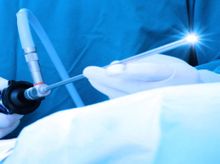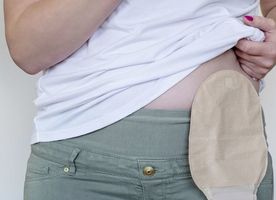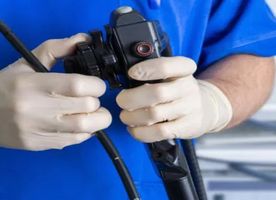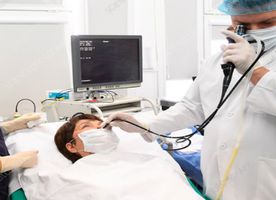Diagnostic Laparoscopy in South Korea
Search and Compare the Best Clinics and Doctors at the Lowest Prices for Diagnostic Laparoscopy in South Korea




































































































































No Time?
Tell us what you're looking for and we'll reach out to the top clinics all at once
What does a Diagnostic Laparoscopy Procedure Involve?
Alright, so you're up for a Diagnostic Laparoscopy procedure, but what does it all involve? First and foremost, understand it's mostly an outpatient procedure. You don't have to worry about spending nights in the hospital. You'll be given anaesthesia to ensure you're comfortable throughout the process.
The doctor uses a small tube with a camera (called a laparoscope) to peek inside your abdominal area. They make a small incision in your belly, then insert a thin tube to inspect the organs. After having a good look, they pull the tube out and stitch up the tiny cut. It's a pretty quick procedure, often wrapping up within an hour.
Remember, this procedure is relatively low risk, but like any other medical procedure, there are potential complications such as infection or bleeding. Ensure you follow all post-procedure care instructions from your doctor to minimize such risks.
How Long Should I Stay in South Korea for a Diagnostic Laparoscopy Procedure?
You might be wondering about your stay duration within South Korea for Diagnostic Laparoscopy. As we said earlier, this is typically an outpatient procedure. It means, in most cases, you won't need to stay overnight in the hospital. You come in, have the procedure, and leave the same day.
However, don't take this as a hard-and-fast rule. Everyone is different, and every situation is unique. Your doctor might suggest you stay for observation if it's a complex case or if you have other health conditions. The bottom line is, to listen to your medical professional's advice. They know your case best and will offer guidance best suited for you.
What's the Recovery Time for Diagnostic Laparoscopy Procedures in South Korea?
Recovery time for Diagnostic Laparoscopy in South Korea varies from person to person. Generally, though, it's quicker than other, more invasive surgical procedures. You can expect to fully recover within a week or two. That's not to say you won't feel fine a day or two after the procedure. Quite the opposite—most people report feeling back to normal within a couple of days.
Keep in mind, that these are approximate timelines. It’s recommended to plan your schedule and responsibilities around a two-week recovery period. This allows ample room for your body to heal properly. Your doctor will advise you about specific activities you should avoid for a while such as heavy lifting or vigorous exercise. Remember, the most important thing is to listen to your body and allow it the rest it needs to fully recover.
What sort of Aftercare is Required for Diagnostic Laparoscopy Procedures in South Korea?
Addressing aftercare, a Diagnostic Laparoscopy procedure, there's a set of guidelines to follow to ensure a smooth and quick recovery. The hospital or clinic in South Korea will give you personalized instructions based on your health and condition.
You'll have a dressing on the area where the doctor made the incision. You need to keep it clean and dry to prevent infections. Pain and a bit of discomfort are common for the first few days. Over-the-counter pain relief medications usually do the trick.
Regularly check the incision site for signs of infection like excessive redness or swelling. In case you encounter any unsettling symptoms, it's important to get in touch with your healthcare provider right away. Also don't forget, rest is key to recovery. Take it easy for the first few days, stick with light activities, and gradually get back to your regular routine as your body allows.
What's the Success Rate of Diagnostic Laparoscopy Procedures in South Korea?
The good news is, it generally works out pretty great for most people. It’s turned out to be a reliable way to spot and diagnose many health problems.
But remember, the real measure of success isn’t just the procedure itself. It’s also about your care and recovery afterwards. Make sure to follow the care instructions your doctor gives you and keep a close eye on your recovery process. And remember, this is about finding answers. Depending on what the doctors learn from the laparoscopy, you may need additional treatments.
All in all, lots of folks have successful Diagnostic Laparoscopies. But every person and situation is different. So, it’s always a smart move to chat with your healthcare provider about what you can expect from your personal procedure.
Are there Alternatives to Diagnostic Laparoscopy Procedures in South Korea?
Wondering if there's another way than Diagnostic Laparoscopy to get answers to your health problem? Well, yes, there are. But keep in mind that what works best heavily relies on your specific condition and the details the doctors want to find out.
Some doctors might suggest simpler ways to look inside like:
- ultrasound
- CT scan
- MRI scan
But there are also more involved methods, like open surgeries where the doctors check directly. The thing is, each method has its positives and negatives. An ultrasound or CT scan might be more comfortable for you yet may lack the complete picture. More involved surgical methods can throw in more clarity but might mean a longer recovery time.
In figuring out what path to choose, have an open chat with your doctor. They can help you understand the trade-offs that you need to consider. Questions may pop up - don't hold back. Ask everything that crosses your mind – that's what they're there to do.
This information has been accurately sourced and verified by a medical professional for its accuracy, however, we strongly recommend you to consult with your doctor before pursuing medical procedures overseas.



























